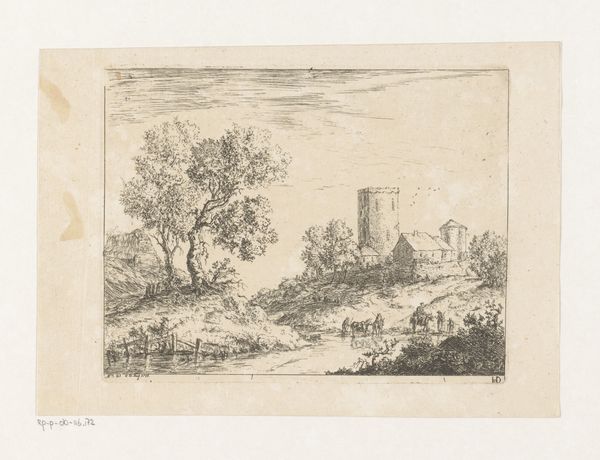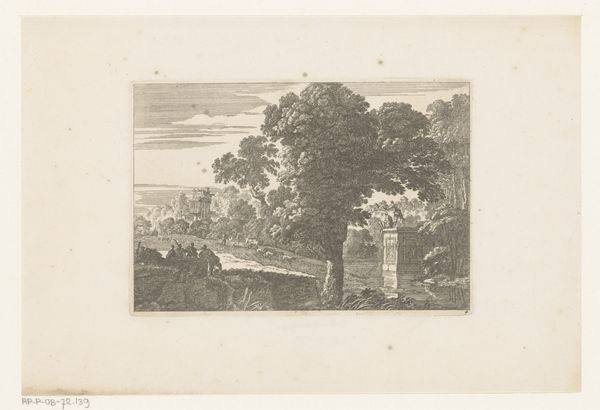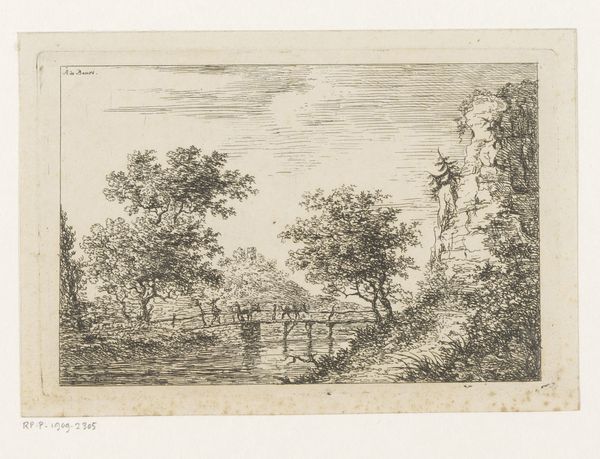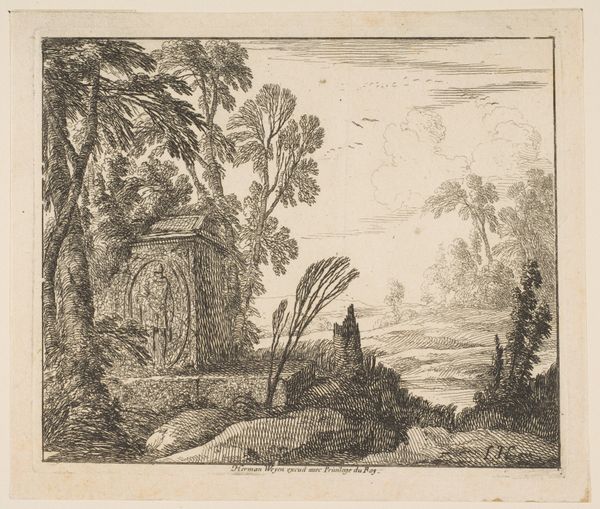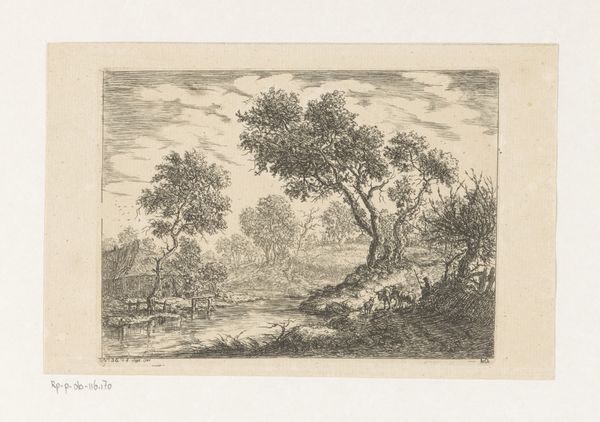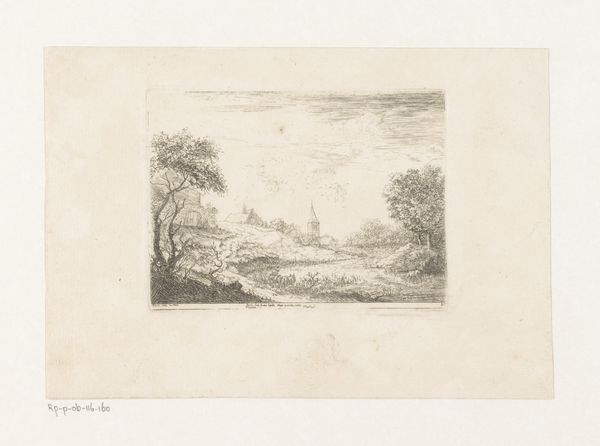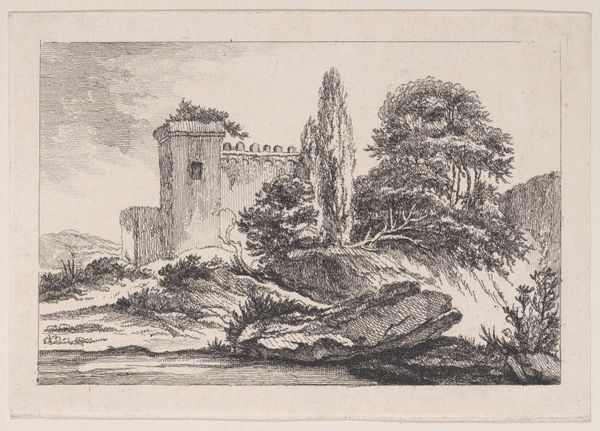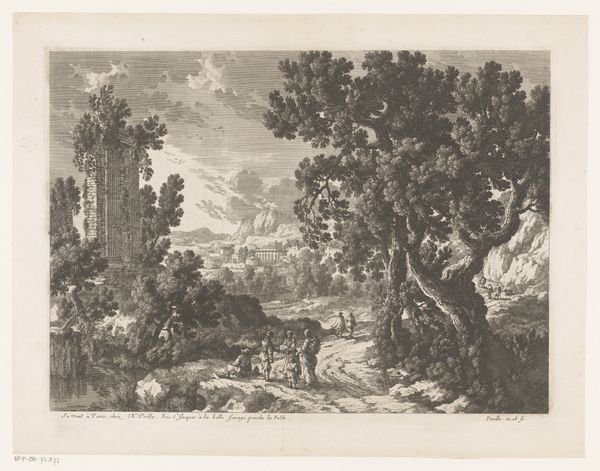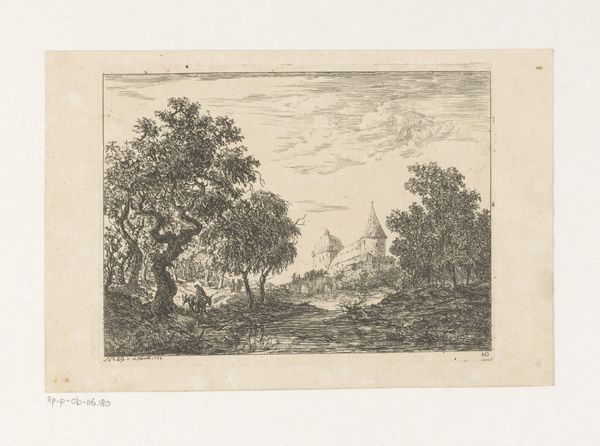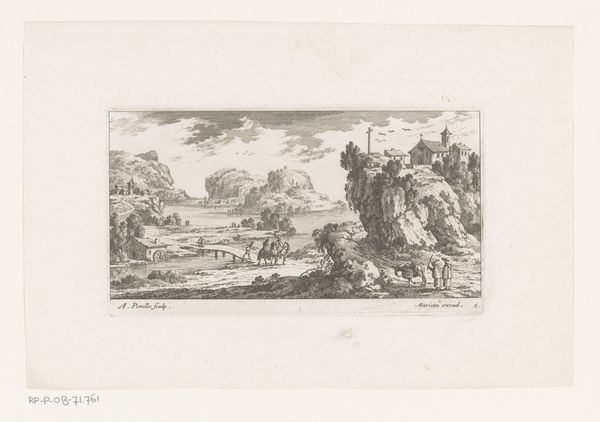
#
pencil drawn
#
amateur sketch
#
light pencil work
#
pencil sketch
#
old engraving style
#
etching
#
pencil drawing
#
ink drawing experimentation
#
pen-ink sketch
#
pencil work
Dimensions: height 138 mm, width 179 mm
Copyright: Rijks Museum: Open Domain
Curator: Let's consider Christian Ludwig von Hagedorn’s “Landschap met vesting,” likely created between 1744 and 1748, currently residing in the Rijksmuseum. The medium appears to be pencil on paper. What’s your immediate take? Editor: It strikes me as a rather serene, almost melancholic landscape. The subdued tones and the rather deliberate placement of the fortress evoke a sense of isolated power, even vulnerability. The bridge seemingly struggling against nature suggests themes of human ambition tested against a wild surrounding. Curator: Indeed. Consider the linear precision in the architectural rendering of the fortress compared with the more organic, free-flowing strokes depicting the tree. Von Hagedorn crafts a clear binary. The controlled geometric forms against the undulating lines of nature establish an oppositional relationship. The use of light and shadow creates spatial depth and defines the structural integrity of the building. Editor: Absolutely, but that structural integrity speaks to something larger than architectural merit, I think. Aren't fortresses historically always about exclusion? About ‘us’ versus ‘them’? The way this one seems almost consumed by the landscape makes me wonder about the futility of such division, its temporality. The bridge in many ways reinforces the human impact on the landscape in spite of itself, struggling and overrun at the same time. Curator: A compelling interpretation. Focusing on purely formal terms, the artist directs the viewer's gaze through compositional arrangements. The fortress, positioned slightly off-center, gains prominence because of the converging lines created by the landscape elements and atmospheric perspective. Editor: But whose gaze is being directed? This period in European history was one of intense social stratification and colonialism. The ‘objective’ gaze the artist supposedly directs toward nature often naturalizes existing hierarchies. By depicting the fortress, is he celebrating power or subtly critiquing its limitations against the overwhelming force of nature? Perhaps it hints to what can be protected and who benefits in a society ever fearful of outsiders. Curator: A valid point. On the level of pure observation, however, it's fascinating to note the meticulous detail in the trees against the looser, sketch-like rendering of the clouds, offering an insightful window into artistic choices about refinement and abbreviation. Editor: I appreciate how the composition subtly confronts us with enduring tensions - power versus nature, inclusion versus exclusion. Perhaps it encourages us to view the art as an insight into society itself. Curator: Von Hagedorn's manipulation of form, line, and texture constructs more than just a landscape—it constructs a conversation. Editor: A silent dialogue prompting us to reflect on the relationship between ambition, exclusion, and the world that dwarfs us all.
Comments
No comments
Be the first to comment and join the conversation on the ultimate creative platform.
